If 2020 has taught us anything, it’s that we need to stay nimble and ready to adjust to whatever comes next.
This is much more than a single skill - it’s about adapting quickly to changing circumstances. Log onto LinkedIn or Forbes and you’ll see the same headlines about why adaptability matters:

As L&D leaders, this might seem obvious enough. After all, you’re already investing in the guidance and support your employees need to keep up with a changing market. So, in a year full of unprecedented challenges, how can we actually help people develop new skills quickly? How can we boost employee adaptability?
Offering this support doesn’t just help people to stay resilient - it also helps them to feel more engaged. In fact, L&D guru Josh Bersin has published research saying that people who spend time learning at work are 21% more likely to feel confident and happy. In turbulent times, this can make all the difference.
Here, I’ll share four practical steps you can take to boost employee adaptability and resilience, and give your teams the tools they need to be happy and successful - even when the world is stressful. These steps are a mixture of things you can do immediately, and long-term continuous improvement practices to embed in your everyday L&D strategy.
1. Support learning in the flow of work
Workers spend approximately 19% of their time searching for information. That’s why it’s super important for people to have access to learning resources in places where they already spend a lot of their time. We call this “learning in the flow of work”.
A great example would be to look up a video on a certain knife technique when you are preparing a meal. You seek this information out because it helps you with this task at hand, and you absorb the information because you put it into practice right away. This is a key part of employee adaptability, and we want to apply this to the world of L&D.
Learning in the flow of work is an intuitive concept, and many businesses are already making it a reality. And yet, when we start working with many of our clients, many of them need help in putting the concept into practice.
There are two key steps to making this work. First, you need to provide ultra-relevant courses that give people direct support to perform tasks at a higher level. Second, you need to provide opportunities for learning at the point of need.
Providing ultra-relevant courses
Here are some courses that our L&D and Sales Enablement teams have made that are super relevant to helping reps perform daily tasks at a higher level.
- “How to go from Contract to Validation in Salesforce”
- “How to Win Against ‘X’ Competitor”
- “How to Use Your Tools”
These courses are great because they offer concrete guidance and information to help people with their jobs immediately.
At the point of need
This is a basic but powerful idea. If you want people to learn, and do it quickly and consistently, you need to provide the learning opportunities where they spend the majority of their time. In other words, don’t make learning an inconvenience.
At 360Learning, we provide learning at the point of need with:
- Project Management Tools
We use Trello for our internal communication at 360Learning. It’s where we collaborate on projects, share our victories, and so much more. In practice, this means if I need a refresher on how to create a support ticket, expense a new office chair, or make a content request from our marketing team, I don’t have to leave the flow of my work to do so.
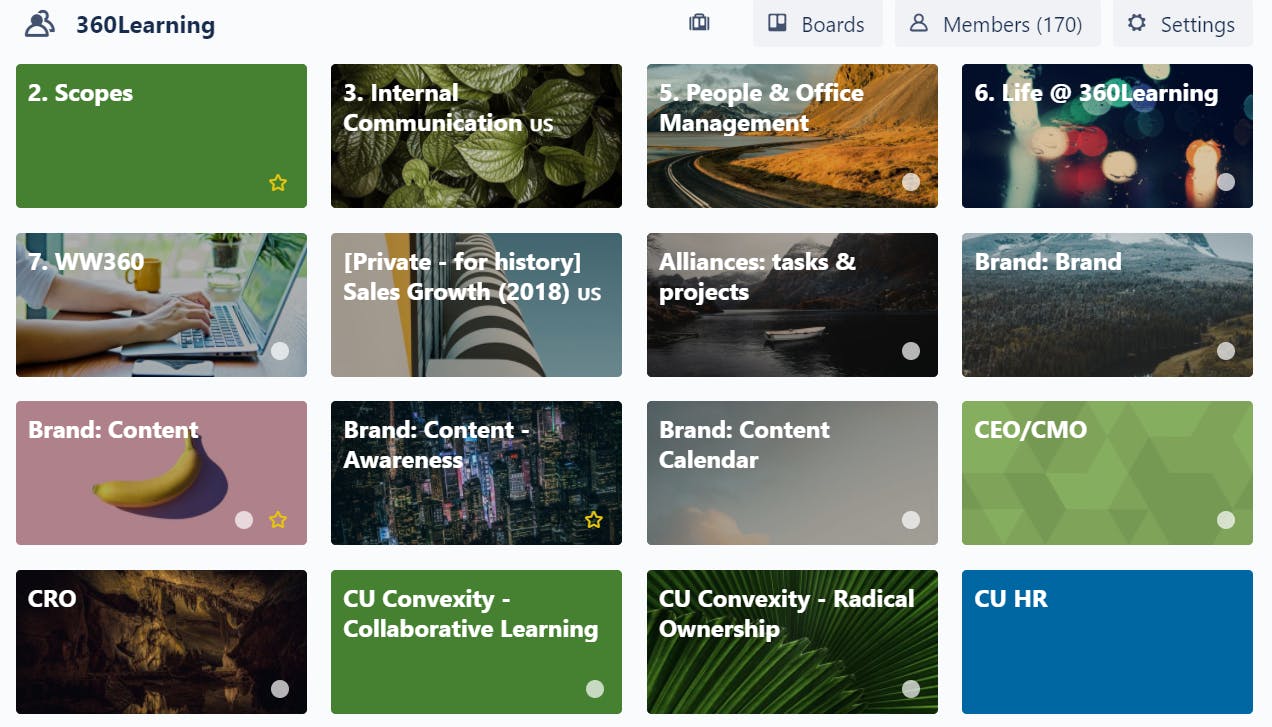
- The 360Learning Platform
Of course, our own tool is also designed to provide timely support. For our sales teams, this means connecting right into Salesforce. So, if I’m selling a new product or have made it to the final two candidates for an opportunity, I don’t have to go somewhere else to access knowledge that will help me do my job.
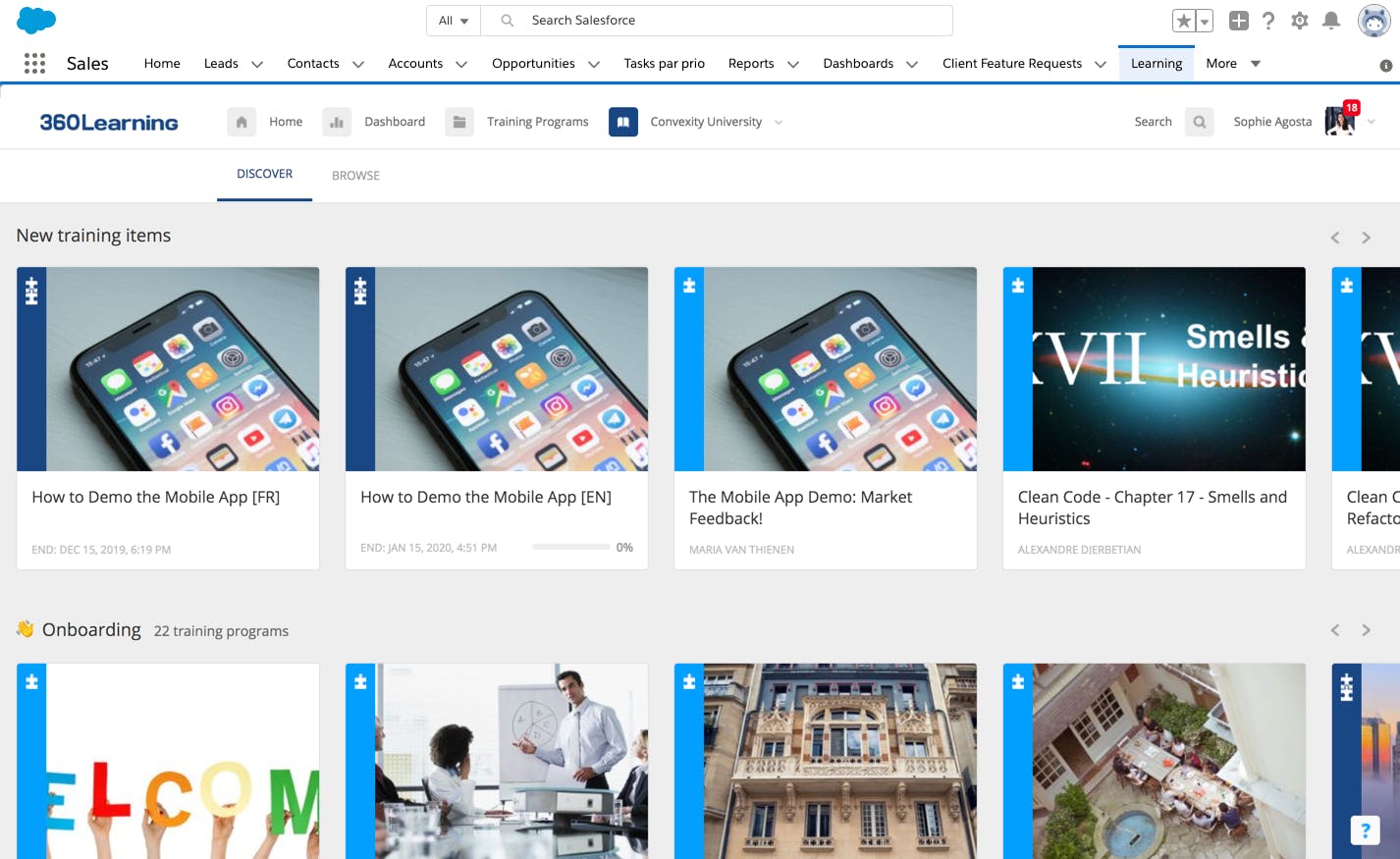
2. Make learning an ongoing dialogue
Learning to do something the wrong way can be worse than not learning at all. This is why feedback and coaching are so important to building employee adaptability.
Here are some things to remember when providing feedback to help your teams stay nimble:
- Be timely with feedback
- Offer feedback that is specific to certain skills or knowledge
- Balance your critiques with praise
Beyond simply providing feedback, it is super valuable to offer opportunities for back-and-forth exchange as people move through learning materials. In a traditional classroom environment, it's easy to have a dialogue around pieces of information. People can raise their hand, ask a question, and have a conversation. For a variety of reasons, this kind of in-person dialogue isn’t possible at the moment. This is why having some form of social feed in your courses is so impactful.
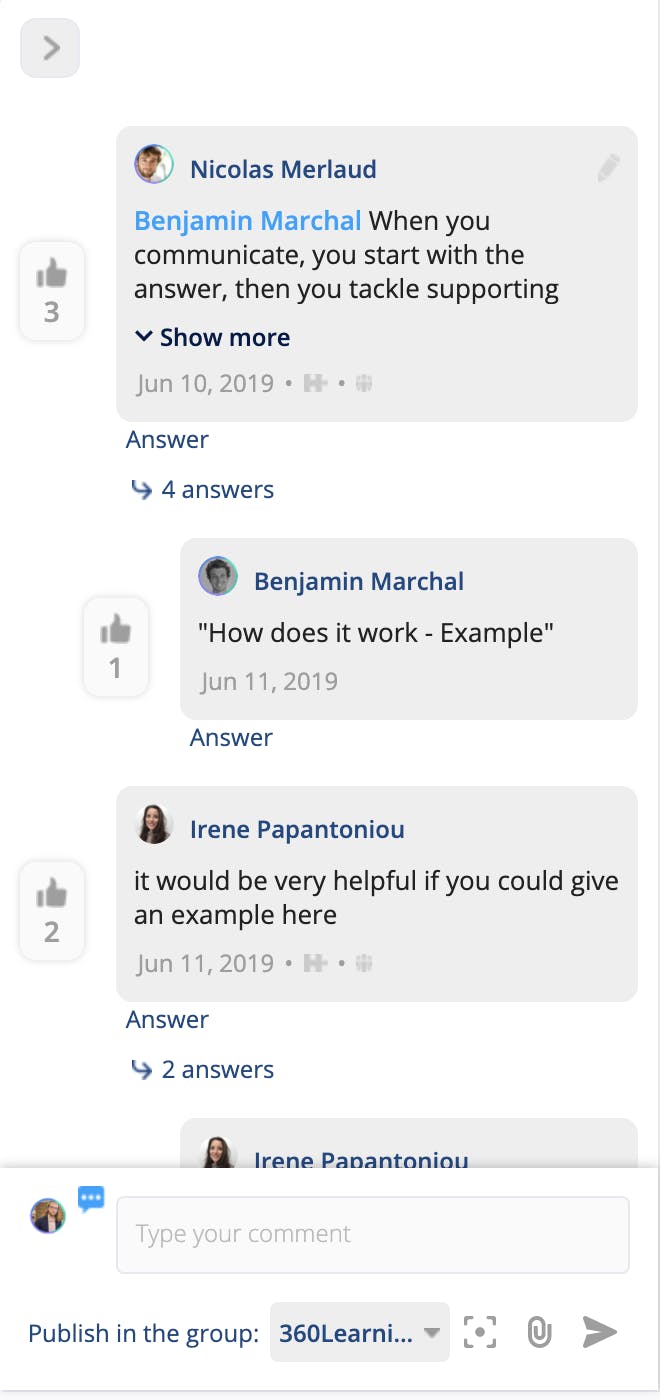
You don’t need fancy social features in order to build a peer conversation around learning materials. The important thing is that you have a place for people to ask questions, share ideas, and develop knowledge together. This is essential for building a system for employees to develop new skills at pace.
3. Look to the greats for example
I read a story a while back about a teenage Benjamin Franklin trying to teach himself to be a better writer. He would take a published work, take notes digesting the main ideas, and then attempt to recreate them in his own words. Next, he would compare his creation to the original and find areas to improve upon.
On the first sales team I was a part of, our coach would always seat new hires next to some of the top performers. I learned so much listening to their calls every day. They would even toss me a tip or two when they heard something I could do better. Before I knew it, I was the person offering advice to the newbies.
There is a common theme here: subject matter experts (SMEs) are often the best people to teach and train new skills. If you want to build an infrastructure to help your employees develop new capabilities in an efficient and practical way, make sure your top performers are involved.
We have a learning needs functionality built into 360Learning that is specifically designed for your SMEs to be able to put up their hands to create a course around a certain topic.
Anyone can declare a need, and can easily find the learning support they’re looking for:
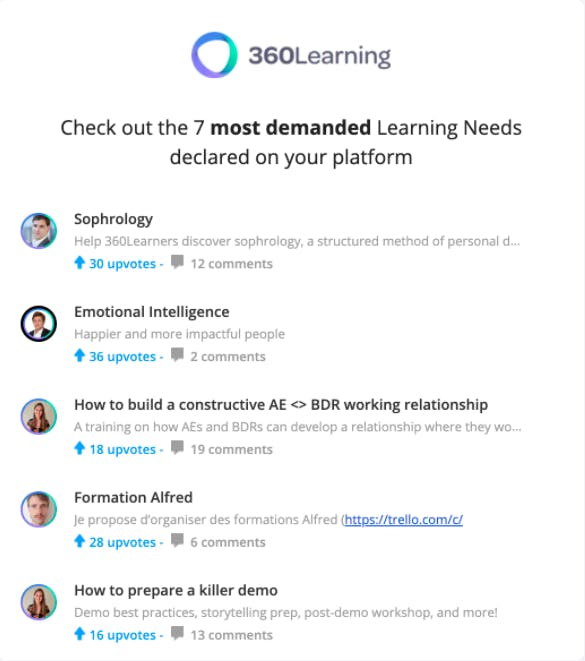
Then, anybody can volunteer to create a course around that learning need.
You don’t need a tool like 360Learning to put this basic idea of SME learning in place. We talk to organizations all the time who are having their managers, coaches and top performers run training programs around the areas that they know best and empowering their employees to acquire new skills and do it super quickly. We just make it a lot easier for that to happen!
4. Use data to make continuous improvements
Data is a super powerful tool to help you continuously improve training and equip employees with new skills. During the learning journey, ask your employees what they found helpful, what wasn’t clear, and what information may be redundant.
This is where the Kirkpatrick Model of training evaluation is so useful. It is based on collecting data around 4 levels:
- Reaction to training material
- Retention of information
- Impact on behavior
- Results of changed behavior
When it comes to helping employees learn new skills, and doing it quickly, having comprehensive data around learning is invaluable. The Kirkpatrick Model recognizes that it isn't enough to just set up great training - you have to measure outcomes, too.
So, how does data help people learn faster?
Let’s say you just published a new course. After a week of people taking the course, you might notice that on one of the videos 15 people expressed the feedback that they just didn’t get it, or that it was a little confusing. Now that you’re aware of this, you can go back, edit that material, clear up the confusion, and make sure that every single learner is making the most of their time!
This is the purpose of the reaction bar that exists at the bottom of every activity in 360Learning. It gives your audience an opportunity to let you know what works, and what doesn’t. This is a crucial part of continuous improvement.
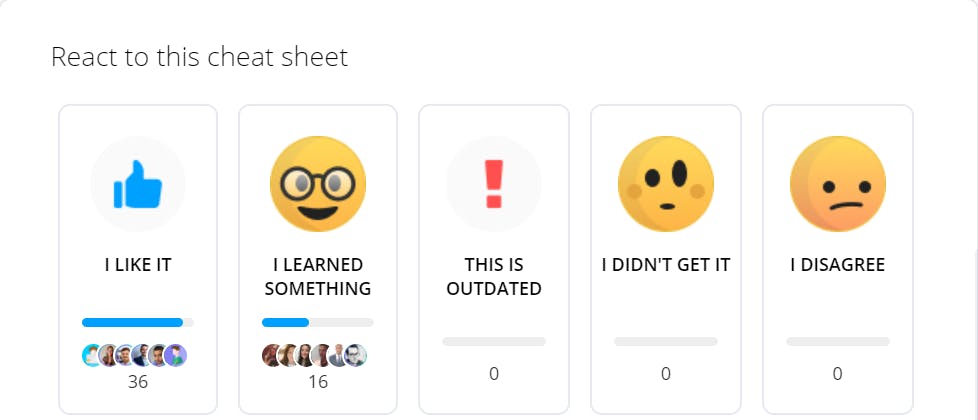
Time is the only thing that we can never get more of. A great learning platform helps people learn faster by cutting the fluff. By engaging every learner in the process of improving your resources, you also make everyone feel more engaged.
This is just the tip of the iceberg for connecting learning to data. Check out our blog, “3 Data-Based Ways To Prove Training ROI (+ Free Training ROI Calculator)” to learn more about capturing data around training.
Always be learning
The business climate is changing faster than ever. I doubt anyone could have imagined seeing the challenges we’re seeing right now a year ago. Who knows what we'll all be dealing with in another year?
In this environment, every one of your teams needs to be at the top of their game. Your sales team must understand the latest product offerings and go-to-market strategies. Your marketing team needs to be savvy with the latest tools and tech. Newly promoted managers need to know all the ins and outs of coaching, and what it takes to be a leader within your organization. You can support them all by focusing on:
- Learning in the flow of work - provide access to courses where people spend their time and where they run into challenges. This way, they don’t have to go searching for materials and they can put ideas into place immediately.
- Making learning an ongoing dialogue - people learn the most when they are receiving feedback around how they put new ideas into place.
- Looking to the greats for example - you have a wealth of knowledge within your organization. Take advantage of it! The best instructors are those people who are on the ground working with the material day in day out.
- Using data to make continuous improvements - turn to numbers to see what people are struggling with, how they respond to new ideas, and what pieces of information are the most helpful.
There’s only one way to succeed in the face of these challenges: dedicate yourself and your organization to learning through continuous improvement. Check out our ebook on how to become a Learning Organization, and equip yourself and your company with the tools to always be learning, and every one of your teams will thrive in the face of adversity.
Want more insights on how leading L&D experts are transforming workplace learning? Check out our series of interviews with forward-thinking L&D experts for more posts like this. You can subscribe (below 👇) to our weekly newsletter to receive our latest posts directly in your inbox.


